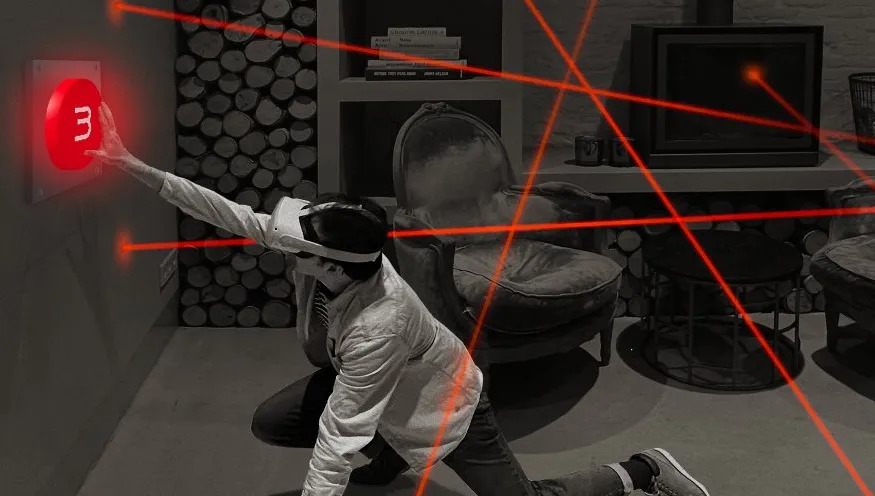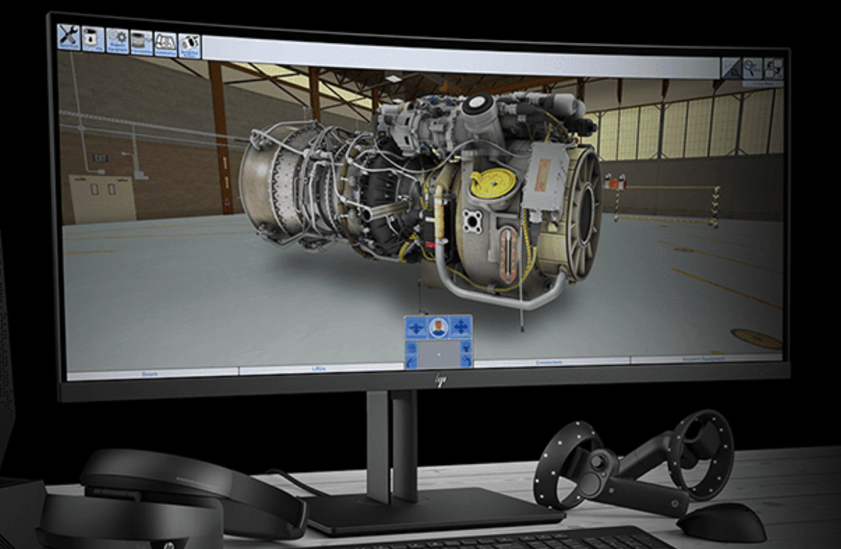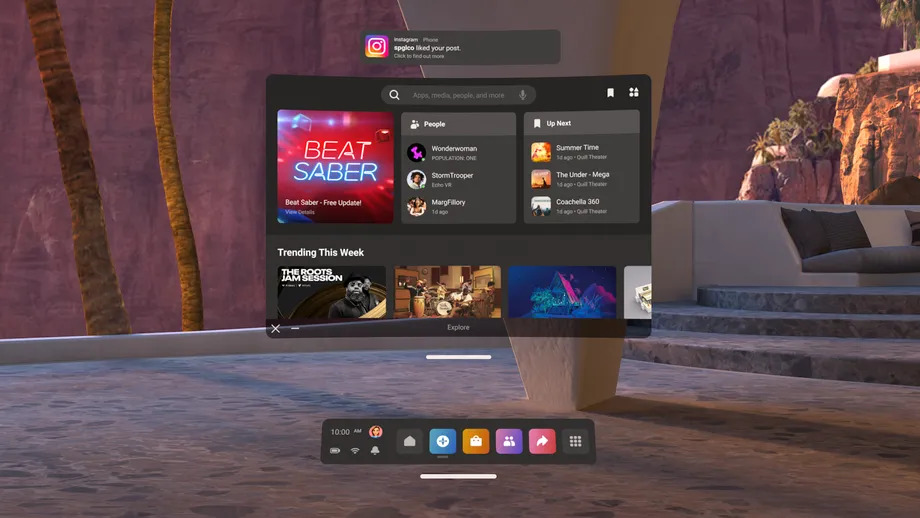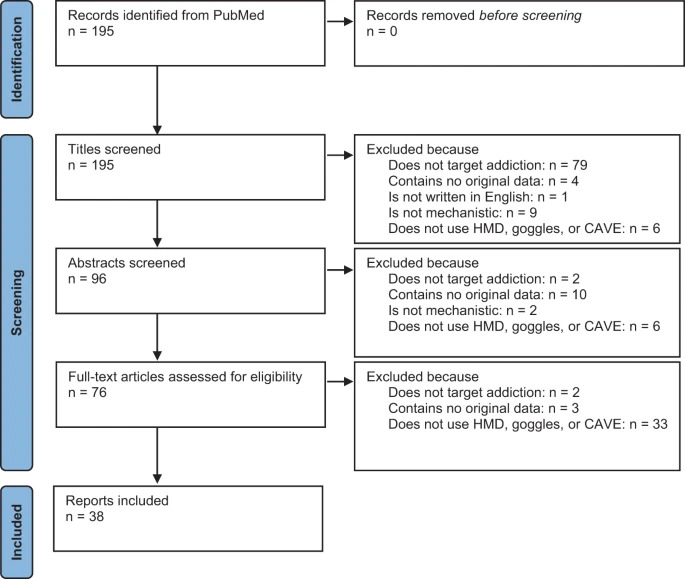Step one: dance!
Welcome to Lowpass, a newsletter about the future of entertainment and the next big hardware platforms, including smart TVs, ambient computing and AR / VR. This week: The developer of the mixed reality game Laser Dance shares lessons learned, and smart speaker maker Syng is has lost two senior execs.
This week’s Lowpass newsletter is free for all subscribers; next week’s lead story will only go out to paying members. Upgrade now to not miss it.
The secrets to building compelling mixed reality apps
Mixed reality is having a moment: Earlier this month, Meta announced that it will release the Quest 3 with color pass-through this fall. A few days later, Apple unveiled its Vision Pro headset, which is all about combining a live video view of your surroundings with virtual objects.
I’ve been fascinated with pass-through mixed reality ever since I first got a washed-out grayscale view of my home after bumping up against the safety boundaries of the original Quest 1. But I’ve also been underwhelmed by some early mixed reality apps, including those that Meta demoed when it introduced the Quest Pro last year.
Apps like TribeXR and Wooorld incorporate mixed reality by simply turning off what developers call the skybox – the VR scenery that lurks in the background of the actual game or experience. There’s nothing inherently wrong with that approach, and one could argue that a DJ for instance can only benefit from seeing their real-world audience. However, it’s also not really mixing your realities as much as layering them, and swapping out one background for another.
Then, last month, I saw some videos for an upcoming mixed reality app that seemed really different and unique: Laser Dance turns real-life spaces into ”Ocean’s 13”-like vaults, complete with security lasers that only most agile players can avoid. Laser Dance is currently being developed by Thomas Van Bouwel, who previously released the VR puzzle game Cubism. I got in touch with Van Bouwel the other day to pick his brain about the emerging art and science of building compelling mixed reality apps.
Make mixed reality essential. Van Bouwel told me that he built Laser Dance out of a fascination with mixed reality, and the desire to build a game that felt native to the new medium.
- “For any VR game, you can ask the question: does this need to be in VR,” he said. “I think you can ask the same question about mixed reality. It can add a lot to a VR game, but sometimes, it doesn’t need to be there.”
- Van Bouwel actually added a mixed reality mode to Cubism as well, which he freely admits is “a nice-to-have,” but not essential to the gameplay.
- However, even those nice-to-have features can be the start of something more. With Cubism, Van Bouwel is now looking to turn the mixed reality mode into a kind of tabletop game, complete with menu buttons that provide haptic sensations by being locked to the surface of the table.
- Plus, some people do find it more immersive, or less disconnected, to be centered in their own space and still have some sense of their surroundings.
Pay attention to people’s spaces. Laser Dance places two virtual buttons on opposing walls of a room, and then tasks players with getting from one button to another while avoiding increasingly difficult laser patterns.
- To do this, the game relies on people scanning their spaces, including any furniture and other obstacles they may have.
- The game then generates later patterns based on those spaces, which can look very different depending on people’s real-world environments. “You need to try to make your game adaptive to different spaces,” Van Bouwel told me.
- Van Bouwel has been scanning every hotel room he’s been staying in, just to get more data for testing. He then uses that data to recreate those spaces in a custom tool he built to design Laser Dance.
- “Development tools to emulate different spaces become very important,” he told me.
- But it’s not just spaces that are unique. The same goes for people, too. Van Bouwel noticed that players with broad shoulders were often hesitant to enter tight laser tunnels.
- He’s now incorporating these lessons as he is trying to make Laser Dance more accessible for players with different body shapes and abilities. “Not everybody can crawl on the floor,” he said.
Mixed reality is an ever-changing playground. It’s still very early days for mixed reality. Most headsets in people’s homes barely support the technology, if at all, and things are going to evolve quickly over the next few months.
- The best way to deal with this is to be nimble, suggested Van Bouwel. “Start learning and start building, but expect things to change.”
- He’s been testing a few different concepts himself, including swapping out aspects of people’s real-world spaces with virtual elements – something that Meta first demonstrated with its World Beyond demo.
- “I made this test where your room was an underwater station,” he told me. “All the walls were replaced with these big windows, and you (could) see an ocean around it, and see fish swimming by. It was super basic, but very compelling.”
Get ready to test a lot. Van Bouwel’s final advice to anyone looking to explore mixed reality: Test, test, and then test some more. “The only way to learn about what is working (and) what’s not working in your game, especially (in) mixed reality, is to play-test a lot.”
Quelle:
https://www.lowpass.cc/p/mixed-reality-laser-dance-developer-insights




